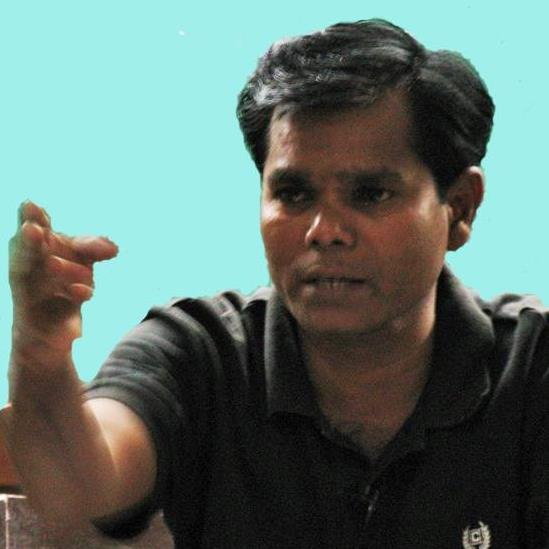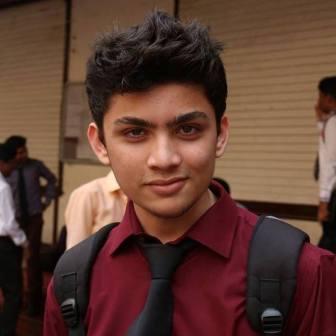Arvind Shesh
Continued from here.
 ‘Jiyo re bihar ke lala’ (Long live the son of Bihar): Immortalising Brahmeshwar Mukhiya
‘Jiyo re bihar ke lala’ (Long live the son of Bihar): Immortalising Brahmeshwar Mukhiya
Whether or not the viewers of the movie (Gangs of Wasseypur) remember much of it, they will certainly not forget the last scene:
Sardar Khan and his son have become so generous that they make the first step towards resolving a ‘long standing’ dispute between the two clans by agreeing to a marriage with Sultan Qureshi’s sister. But Sultan Qureshi is someone who is treacherous, bigoted, parochial, barbaric, backward, who sells out to a Hindu (Ramadhir Singh), and who, along with his gang, violently shoots Sardar Khan. Riddled with bullets, smeared in blood Sardar Khan is still alive when he steps out of the car while waving a gun as the song plays in the background (like a slogan) – jiyo re bihar ke lala..jiyo tu hajaar saala (Long live the son of Bihar, may you live a thousand years).
It is perhaps sheer coincidence that this scenario unfurled in real life around the time that this ‘amargan’ (song of immortality) played on the cinema screens. The ringleader of Ranvir Sena, Brahmeshwar Singh, who was responsible for the murder of hundreds of Dalits, was similarly killed by a rival gang. Following that, many parts of Bihar, from Ara to Patna, witnessed macabre violence amidst slogans that said: “Mukhiyaji amar rahe” (Long live Mukhiyaji!), “Brahmeshwar Mukhiya zindabad”, “Jab tak suraj chand rahega, Mukhiyaji tera nam rahega” (till there are the sun and the moon, mukhiyaji your name will remain). All of which translates into: “Jiyo re bihar ke lala”
The creators, makers and champions of ‘Gangs of Wasseypur’: what slogans were they listening to..jiyo re bihar ke laala? So if there is any ‘son’ of Bihar who needs to be hailed then he has got to be Sardar Khan..or Ranvir Brahmeshwar Singh!
Moreover, Brahmeshwar Singh and his gang have always acted with impunity or to borrow a line from the movie’s song ‘Keh ke lunga’ is their motto. So those championing the movie are hardly going to be any different. Whenever they attacked any Dalit basti (as did the naxalites), they didn’t just slaughter the menfolk into pieces but, in fact, they first killed women, who according to them might give birth to future naxalites. In a manner similar to how these Ranvirs (ref. Ranvir Sena) enjoy throwing a three-month-old little girl child in the air and murdering her, the swear words all through the movie also refer to mothers and sisters, leaving a deeper negative impact. (As of now I will leave it at this, more on this soon.)
Like how such profanity is a means to cage a woman in her ‘place’, these swear words are also meant to remind a man from a ‘low’ caste his ‘position’ in the society. Similarly, the cheerleaders of the atrocious and abusive language directed at women, which amounts to verbal rape, perhaps belong to the same privileged sections who generously use such terms for the lower castes over the ages. That is the actual conspiracy: to normalise such denigration of women and the lower castes in popular media.
‘True story’: Wasseypur..’false story’: Pan Singh Tomar
But then again, the filmmaker of Wasseypur says, “what I saw, my film has [depicted] that,” and, “those who cannot digest [the profanity], they are old-fashioned viewers of yesteryears.” His defenders call this a depiction of reality. Quite amusing! One of the characters in the film is also the sutradhar (the narrator). And this is most interesting for one doesn’t easily notice that this character is hardly seen using abusive language in the film, but perhaps on behalf of the movie and its director offers the viewers some token abuses like ‘harami’ and ‘sala’. Apart from this, the movie is studded with profanity, even when they often seem deliberate and forced. But if this were the benchmark of reality, then Pan Singh Tomar is a totally false and rubbish movie.
Just imagine for a moment, what must a woman viewer of Wasseypur feel when each time a swear word is uttered on screen and the men folk in the audience were to fill the cinema hall with their cheers? It seems that the filmmaker of Wasseypur suffers from deep-seated misogyny and this mentality of his is something that his film reflects at every point. (A feminist analysis of the movie is also due.)
…and Gangs of Wasseypur in Gulab talkies..
However, there is no point in being alarmed at all this. If you go to the annual fair in Bihar’s Sonpur, you will find the best Arabic breeds of horses, majestic elephants and all manner of dog breeds are on show there. Even if you don’t wish to buy, just to have a look. If you don’t wish to be cheated, then no one is going to cheat you at that fair. You wouldn’t be cheated even at the Gulab theatre, which openly advertises its sleazy fare on its posters, that are found not only outside its makeshift tent but also in the public urinals of Patna to Muzzaffarpur to Buxar. Posters that invite you to ‘enjoy’ the naked bodies of vulnerable women for a mere 50 or 100 rupees.

The filmmakers of Gangs of Wasseypur have also not tried to cheat us in this matter. To promote his film across the country – from intellectual temples to public urinals – he had openly declared to us:“keh ke lenge”. Similar to Gulab theatre which puts naked women on its posters, the filmmaker of Wasseypur hasn’t really cheated any viewer..or the community of such viewers.
In fact, the care with which he has cultivated this community, even Baba Golwalkar’s ghost might just return to thank him, wishing that he were born a little later to be alive to witness all this in person.
I remember a couple of years ago, some people at an event in Delhi asked Anurag Kashyap questions regarding the sociology of cinema. He later tried to answer those by writing somewhere, “whoever has the …, should dare to make this movie.” Clearly, the questions must have hit the right spot. But he wanted to show who had the actual …and tried to display these and his ‘courage’ in the vulgar posters of the movie which said keh ke lenge.
He claims to have done us a favour by choosing Bihar as a subject for this film. To bombard the audience with sickening violence, sex, profanity and feudal mentality, why did he choose only the mid-90s Bihar, and why make such mockery of Wasseypur?
Bathani Tola, Laxmanpur Bathe etc. etc. the many massacres (mere ‘violence’ for this filmmaker), rapes (‘sex’ for this filmmaker), casteist and feudal violence (fancy experiments using profanity to show the ‘plight’ of the oppressed for the filmmaker) – how many such ‘spectacular’ events does he need? But then how else would the ghost of Baba Golwalkar be pleased?
P.S.: the fame of the Cannes festival is such that one would imagine the place has a film festival the whole year round. In fact, one could even say that the economy of Cannes is built on the film festivals. In these series of film festivals, porn film festival also finds a place. You make your film, go there and buy a slot in some cinema hall and let your movie run in the assigned slot. That way you can get the stamp of having been at the Cannes Film Festival, which you can then proudly flash at the beginning of your film too. And think about it: what if a ‘great’ movie like ‘Gangs of New York’ (pardon me) were to get a slot for 6 am?)
P.P.S.: it is a desire of the atheist writer of these lines that, god forbid, the rumour making the rounds were to be proven false that RSS has invested some Rs. 2500 crores in Bollywood. What is agenda and what is politics, saheb..
Please read the previous part of this article here.
[Translated by Akshay Pathak and Gaurav Somwanshi]
Original post in Hindi can be read here.
~~~
Arvind Shesh, originally from Sitamarhi, Bihar, is Assistant Editor at Jansatta (Hindi daily) in Delhi.










